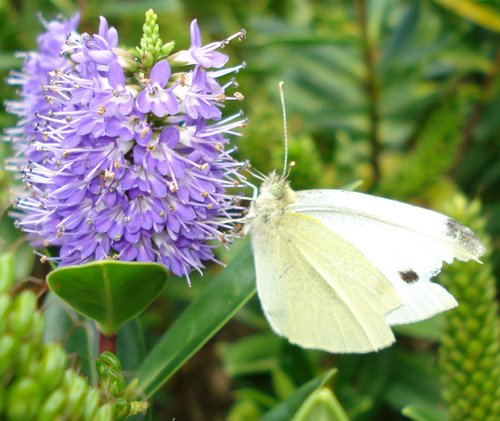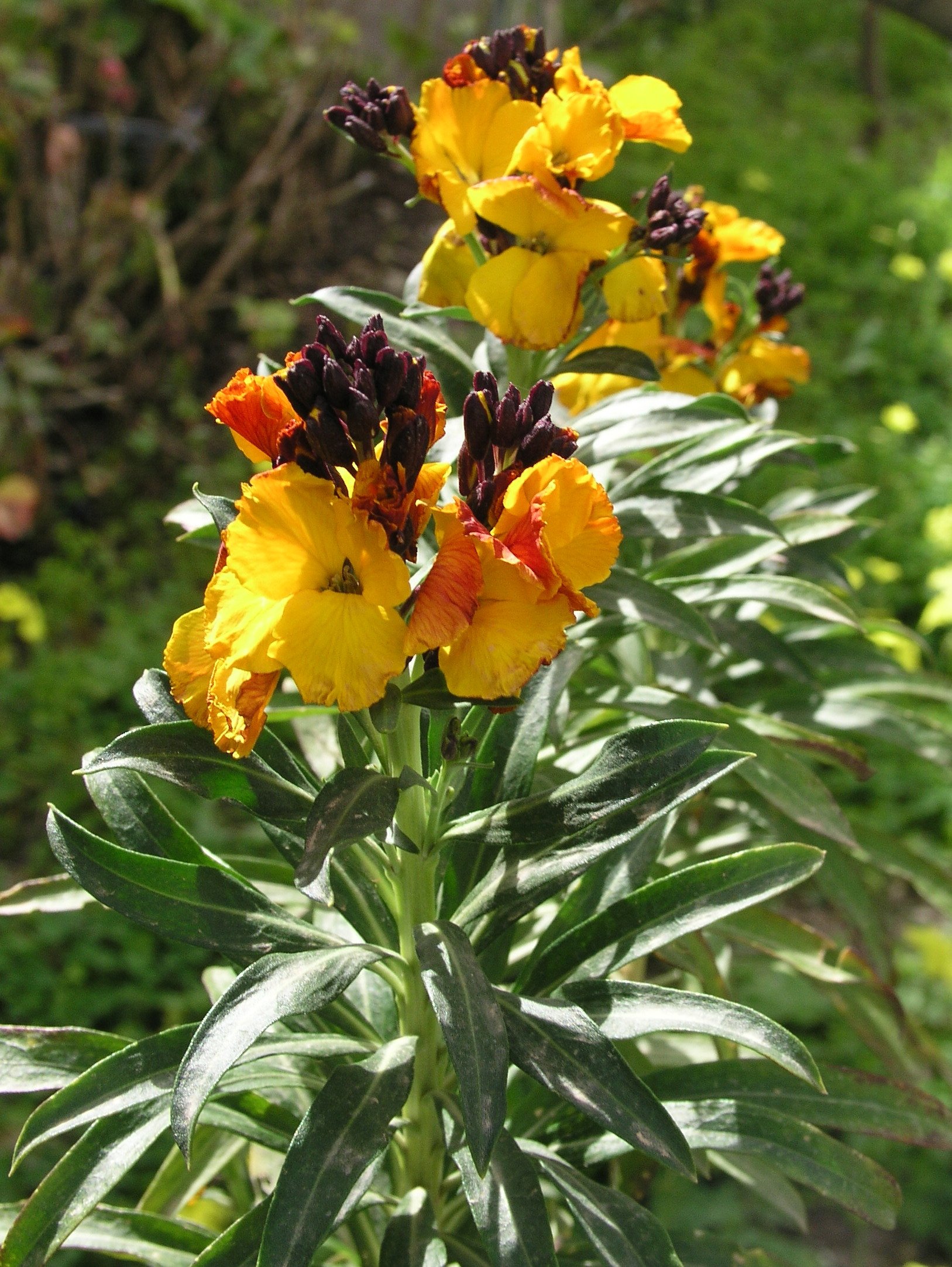By Patricia Jordan
You should be checking for any failures in your garden at this time. I have been making a list of plants I need to replace now that it is cooler and we have a window for planting now that the ground is wet. Out of three young myrtle bushes that I planted at this time last year, one died and the other two are looking rather sad, but with some feeding they may perk up. Marguerites look all woody stems at this time, but with this cooler weather and some rain little green sprouts appear along the woody stems and before long I will be able to take cuttings These are particularly good plants to have, as long as you don’t dig them up because they look dead!
This small island of Cyprus has as many diverse climates as other large countries and your weather conditions will be different from the shore line or in the hills. Even within your own plot there will be places where some plants will do well and others fail, and it may take a while for you to realise that. Some areas of your garden may only get a little rain due to heavy tree cover, but once you are familiar with the mini-climates around you, you can plan accordingly. This is harder for people with new gardens of course, for however well you plan or even have the services of a garden designer to do it for you, it is not until the plants are in the ground that you discover just where the wind tunnels are or cold pockets, which will greatly affect the growth.
As the weather cools down and the autumn gales begin to assault us we look forward to winter rain, hopefully in moderate amounts and not all at once like the rain we had earlier in the year. Looking on the bright side we are coming up to the time when, with the soil nicely wet, we can plant new shrubs and trees. Do remember that any trees you plant will need space to grow, so with that in mind you probably need to leave up to about 4 metres between the trunks of fruit and nut trees to allow for sideways growth, depending on the type of tree of course. Prunus leaves will soon be falling and the best time to move or plant new ones is during this dormant stage. Citrus don’t rest, but it is better to plant them during the cooler months as well. If you are buying new ones from the garden centre, you may even benefit from fruits already on the branches and be sure of what they are! Many people plant young whips, but it will be a few years before you will have any reasonable harvests from then, so buy the largest you can afford. Always allow space for the roots to spread out and hold the tree firmly in the ground. Put some bone meal or slow release fertiliser in the bottom of the planting hole and firm the soil around the trunk with your foot, watering in well.
If you feel that a stake may be necessary then put it in the hole before you put in the tree. If you leave it until later on, you may damage the root systems.
WHAT TO DO IN THE GARDEN THIS MONTH
Autumn is an ideal time to check any plants that have been staked up or hanging over trellises. Their ties may have worked loose during the year and need readjusting. Some may need judicial pruning, so that the tops will not buffet around in the gales. Check rose bushes to see that they are firmly in the ground, using your foot to stamp around the base of the plant. Trim the top growth of them by about one third, so that they will not be blown about in the winds, which could loosen the roots again. Usually Banksia roses do not need staking but like to be supported in some way – over a fence or an umbrella frame. It’s always better to do this whilst the plants are young and malleable as they can grow quite fast and some are known to take over the garden or fence line. The largest one known at the moment is in Tombstone Arizona and covers 740 metres and the trunk is 3.7 metres in circumference – that’s a lot of space, so beware!
Tecoma capensis, that lovely bright orange or yellow flowered shrub from South Africa, will be covered in flowers and may well continue all winter if you live in milder areas of Cyprus. Carissa, also from South Africa, may have produced fruits for you. They are edible but an acquired taste. You may have harvested quince already with their dusky hard skins but a very flavoursome flesh, which when cooked makes a good substitute for apples in crumbles and pies.
Have you ever grown Duranta? This is a very pretty shrub or small tree in the Verbenaceae family, having beautiful trails of sweetly smelling lavender blue flowers, which turn into strings of orange beads later in the season. There is also a deep purple picotee-edged flower variety called Duranta erecta ‘Sapphire’ a native of Central and Southern, America but it should grow well up to about 400 metres elevation here. I have planted a variegated duranta, which struggled rather this hot summer, but should fill an empty space quite nicely once it had really settled in. This variegated form has creamy-yellow margins around the one inch long serrated leaves. It grows best in full sun with frequent deep watering. Be aware though that the fruits and foliage are poisonous to humans.
As you are digging around your plants or refreshing the soil, watch out for annual seedlings, which will sprout once the rains are more frequent. You may be lucky and keep them through the winter, where they will have a head start over any others you plant then. It is surprising at what pops up, along with lots of weed seeds of course. You may find nasturtiums, larkspur, cosmos, cerinthe and/or sweet peas – oh what a short season they have here and that is because roots of annuals are so close to the surface of the soil.
You can also take cuttings of lavender, sage and rosemary – quite the easiest of the herbs to make roots, as well as wallflowers if you have grown them before. Use ‘green’ (soft) shoots, preferably without flowers and having snipped the bottom and dipped it into a hormone rooting powder, pop the cuttings firmly into a pot of compost. Put the pot into a plastic bag and tie the top. They need bottom heat so and keep them in a light place but out of full sun. They should show roots in about 3-4 weeks, when you can remove the bag and move them into larger pots.
There are still Cabbage White butterflies around and they will be very tempted by the sight of all those cabbage and broccoli leaves in the vegetable patch. Try planting marigolds amongst them so that they will look elsewhere to lay their eggs. It is amazing just how quickly their voracious caterpillars can munch through succulent leaves, leaving you without any greens for your winter meals!
Plant of the Month: Erysimum
The term wallflower (the common name for Erysimum) usually describes someone who is shy and retiring, but the plants that go by this name are nothing of the kind! Members of the Brassica family (green vegetables) appear in glorious colours in the spring and can be annuals or short-lived perennials in many parts of the world.
Originally coming from South-west Asia, the Mediterranean and Europe as well as some parts of North America, they belong to the same plant family as many green vegetables. They will thrive in full sun in free-draining soil, grow to about 50cm in height and are ideal for hot gardens. There are many varieties but one that grows especially well from seed is known as ‘Persian Carpet’, the flowers of which appear above the deep-green elongated leaves in all the rich colours that one would expect from such a name.
A special hybrid of unknown parentage named ‘Bowle’s Mauve’ can grow into a small shrub. The flowers are a lovely mauve, set off by greyish leaves, but do not set seed, so the only way this plant can be propagated is by cuttings, taken from new growth. According to the Royal Horticultural Society, it is particularly suited to Mediterranean gardens. All wallflowers are highly perfumed, which adds an extra dimension to a spring garden and many bees and butterflies are attracted to them.
Seeds can be collected from erysimums or cuttings can be taken in late autumn and again from the new growth in early spring. This way you can be sure of the colour of the flowers, some of which are highly scented.




